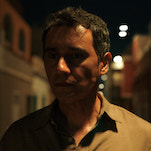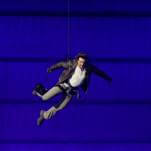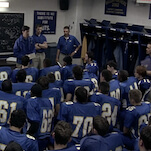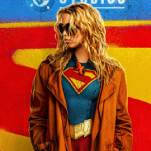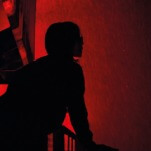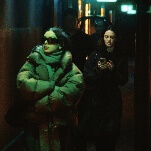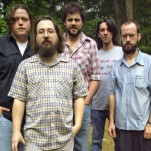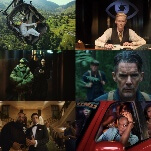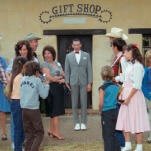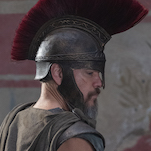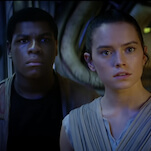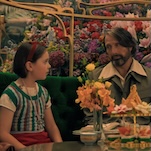We pick up immediately after the events of [REC] 2, as soldiers enter an apartment building and gun down infected residents until they find and rescue reporter Ángela Vidal (Manuela Velasco). The moment recalls a similar scene where soldiers clear an apartment building in Romero’s Dawn Of The Dead, one of a number of details paying tribute to genre greats. (There’s definitely some Alien in there as well.) Cut to Ángela waking up strapped to a gurney in a lab, which turns out to be on a ship that doubles as a top-secret government research facility. There, Ángela meets an old woman, the only survivor of the wedding massacre from [REC] 3, who exists solely to tie the entire series together. She also encounters Guzmán (Paco Manzanedo) and Lucas (Críspulo Cabezas), the soldiers who rescued her from the apartment building, and sinister scientist Dr. Ricarte (Héctor Colomé), who tells the group very little about how they got on the ship and why.
Ricarte’s silence, as well as the general laws of sequel-dom, require some time spent reconstructing the events of the earlier films (except for [REC] 3, which is explained away in a few brief lines). That task is performed by another new character, Nic (Ismael Fritschi), who diligently restores Ángela’s footage from the first movie as she and Guzmán put together what, exactly, the scientists down in the hull are up to. This can feel functional at times, but about a half hour in, Balagueró lets loose an infected monkey—during a blackout, appropriately enough—who attacks the ship’s cook, infecting the chow with zombie blood. From there, the film alternates between exposition and gradually building suspense as Balagueró ratchets up from one to two to a whole mess of zombies prowling the ship’s tight, winding corridors. After the exposition is over, the last 15 minutes of [REC] 4 really cook, as the lights go out and Ángela goes into action-heroine mode amid absolute undead chaos.
Even as he revives the elements that made the first two [REC] films so successful, Balagueró has the foresight to change elements of the series that felt fresh when [REC] was released in 2007 but have since become cliché. This mostly means that, save for a few security-camera shots, he discards the found-footage conceit for a reliance (some might say over-reliance) on shaky handheld camera work. Interestingly, Balagueró also largely negates the zombies’ demonic origins and offers a new, vaguely more scientific explanation, calling into question the climax of [REC] 3, and providing yet another sign that part three didn’t really count.
[REC] 4 is a tight, controlled film, not the explosive epic promised by the “Apocalypse” in its title. It’s being advertised as the final [REC] film, but it often feels more like a middle installment. There’s still space to explore with this franchise, and Balagueró leaves ample room for a sequel. With any luck, he and Plaza will get back together for one more film and give the series the blowout ending it deserves.
![A zombie franchise returns to form with [REC] 4: Apocalypse](https://img.pastemagazine.com/wp-content/avuploads/2015/01/14223042/h7zxzva9kwnarseo4v9w.jpg)


